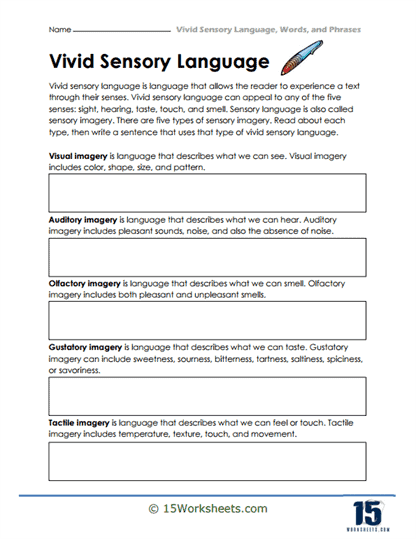Types Of Sensory Imagery

Worksheet Description
The “Vivid Sensory Language” worksheet is focused on enhancing students’ understanding and use of sensory details in their writing. It explains the concept of vivid sensory language, which engages the reader’s senses—sight, hearing, taste, touch, and smell—to create a rich reading experience. The worksheet breaks down this concept into five types of sensory imagery: visual, auditory, olfactory, gustatory, and tactile, providing definitions for each and prompting students to write sentences that exemplify these types.
The goal of the worksheet is to teach students how to incorporate sensory language into their writing effectively. By defining each type of sensory imagery and offering examples, it guides students in creating their own sentences that vividly evoke the senses. This practice helps students understand how detailed sensory descriptions can enhance the imagery in their writing, making it more engaging and evocative for the reader. Such skills are valuable in creative writing, where showing is often more impactful than telling.
